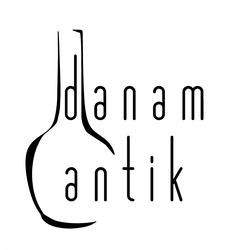Description
Royal Copenhagen Primavera Thorkild Olsen Round Serving Platter No 1515/14038. White Service with flower decoration and gold band. The platter measures 34 cm dia.
Payment & Security
Your payment information is processed securely. We do not store credit card details nor have access to your credit card information.
Estimate shipping
You may also like


Royal Copenhagen
Royal Copenhagen Primavera Thorkild Olsen Oval Dish No 1515/14004
Sale price300,00DKK
In stock, 1 unit

Royal Copenhagen
Royal Copenhagen Primavera Thorkild Olsen Oval Dish No 1515/14031
Sale price550,00DKK
In stock, 1 unit

Royal Copenhagen
Royal Copenhagen Primavera Thorkild Olsen Oval Serving Platter No 1515/14029
Sale price1.000,00DKK
In stock, 1 unit

Royal Copenhagen
Royal Copenhagen Primavera Thorkild Olsen Oval Serving Dish No 1515/14005
Sale price400,00DKK
In stock, 2 units

Royal Copenhagen
Royal Copenhagen Primavera Thorkild Olsen Oval Serving Platter No 1515/14007
Sale price700,00DKK
In stock, 1 unit

Royal Copenhagen
Royal Copenhagen Primavera Thorkild Olsen Deep Plate, Small No 1515/14014
Sale price150,00DKK
In stock, 1 unit

Royal Copenhagen
Royal Copenhagen Primavera Thorkild Olsen Dinner Plate No 1515/14008
Sale price175,00DKK
In stock, 8 units

Royal Copenhagen
Royal Copenhagen Primavera Thorkild Olsen Deep Plate No 1515/14009
Sale price125,00DKK
In stock, 12 units

Royal Copenhagen
Royal Copenhagen Primavera Thorkild Olsen Bowl, Large No 1515/14027
Sale price600,00DKK
In stock, 1 unit

Royal Copenhagen
Royal Copenhagen Primavera Thorkild Olsen Creamer No 1515/9942
Sale price200,00DKK
In stock, 1 unitRecently viewed


Bing & Grøndahl
Bing & Grondahl Elegance, Creme Bowl with wavy edge No 227
Sale price350,00DKK
In stock, 1 unit

Bing & Grøndahl
Bing & Grondahl Saxon Flower, White Caviar Dish no 200
Sale price100,00DKK
In stock, 4 units

Hans Hansen
Hans Hansen Arvesølv No.8 Flatware Set for 12 People. 36 Pieces
Sale price15.000,00DKK
In stock, 1 unit
Bing & Grøndahl
Bing & Grondahl Dealer Advertising Sign "Cumulus"
Sale price400,00DKK
In stock, 1 unit

Royal Copenhagen
Royal Copenhagen Blue Flower Angular Deep Plate No 8547
Sale price250,00DKK
In stock, 6 units

Georg Jensen
Georg Jensen Annual Teaspoon 1980 in gilded Sterling Silver with enamel
Sale price200,00DKK
In stock, 7 units
Evald Nielsen
Evald Nielsen No 6 Tartelet Serving Spoon in Silver
Sale price2.000,00DKK
In stock, 1 unit









